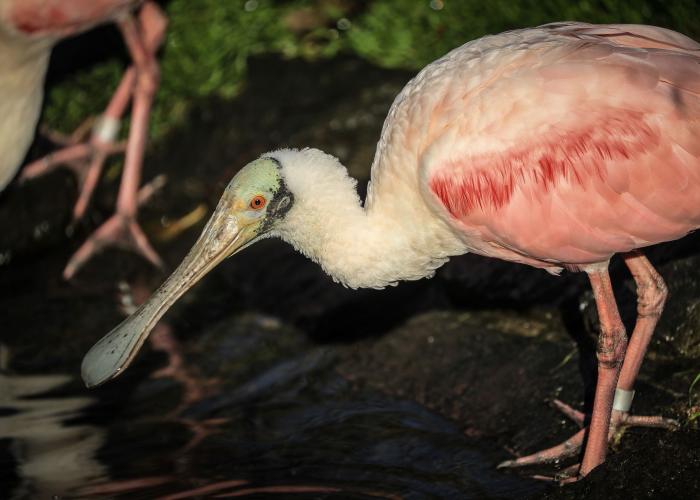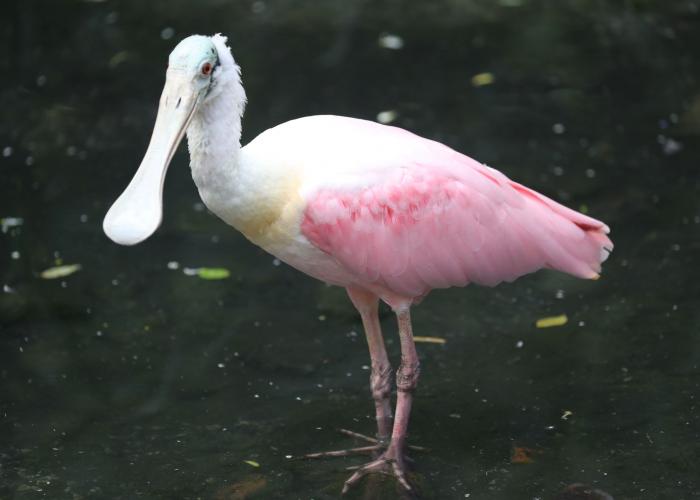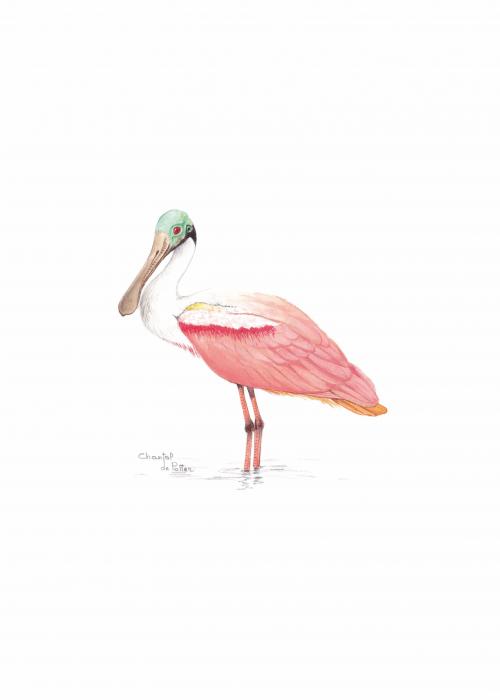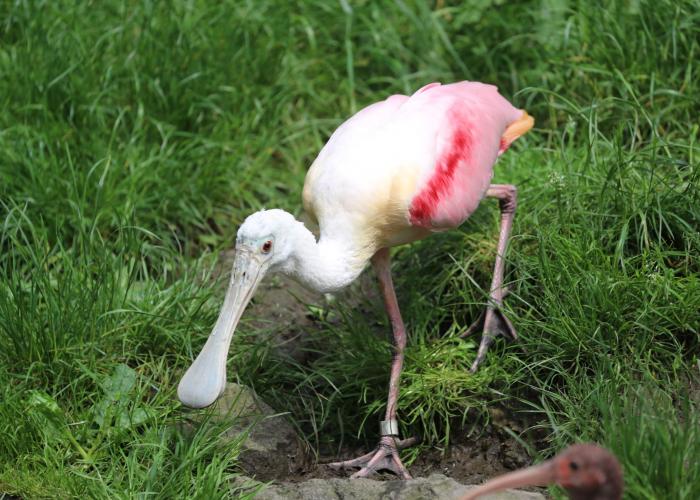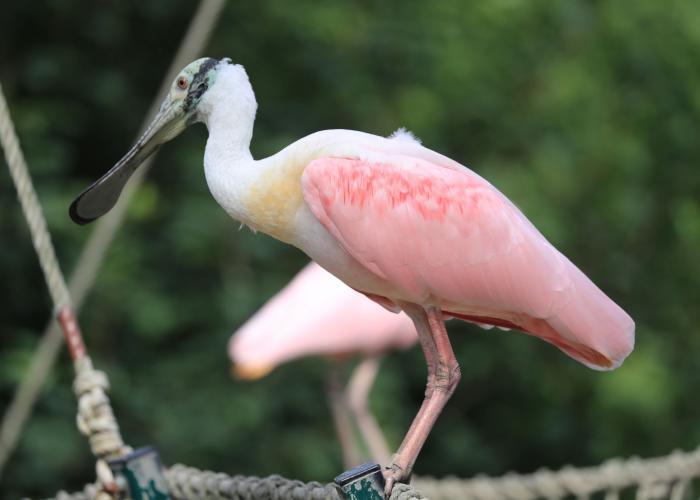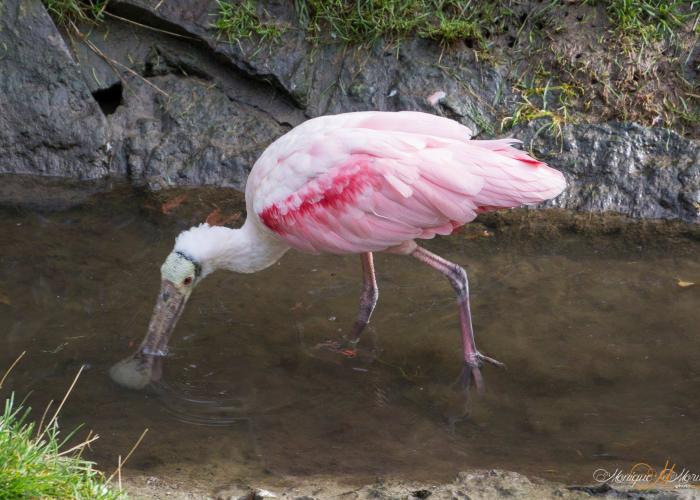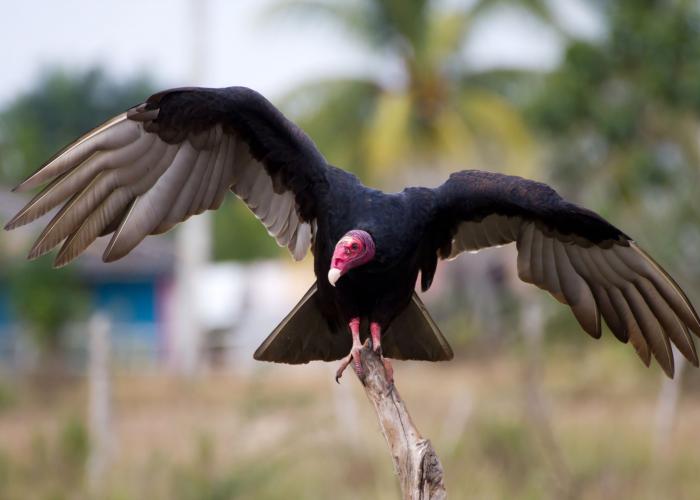Roseate Spoonbill
They nest in particular in mangrove swamps
This wading bird (70 cm tall with a wingspan of 1m20) is easily recognizable by its deep pink colour, except for its head which is grey-green, and its neck, back and tummy which are white.
It has also a highly characteristic beak : long, flat, and wider at the end, like a spatula : it uses it to capture its prey, in the coastal regions’ shallow waters.
To fish, it moves its head from left to right, chasing small animals.
Moreover, as the water is often muddy and troubled, its beak has a secret : it is tactile in such a way that the bird “ feels ” its prey particularly well. It also likes molluscs, little shrimps ; in short, everything that is to be found in brackish water.
Roseate Spoonbills nest in particular in mangrove swamps, those forests of mangroves bordering certain coasts of Central and South America, which is their favourite habitat.
A less threatened species
- Name : Roseate Spoonbill
- Latin name : Ajaia ajaja
- Origin : South-East of the USA, from the West Indies to the South of Argentina
- IUCN status : Least concerned
- Cites : --
